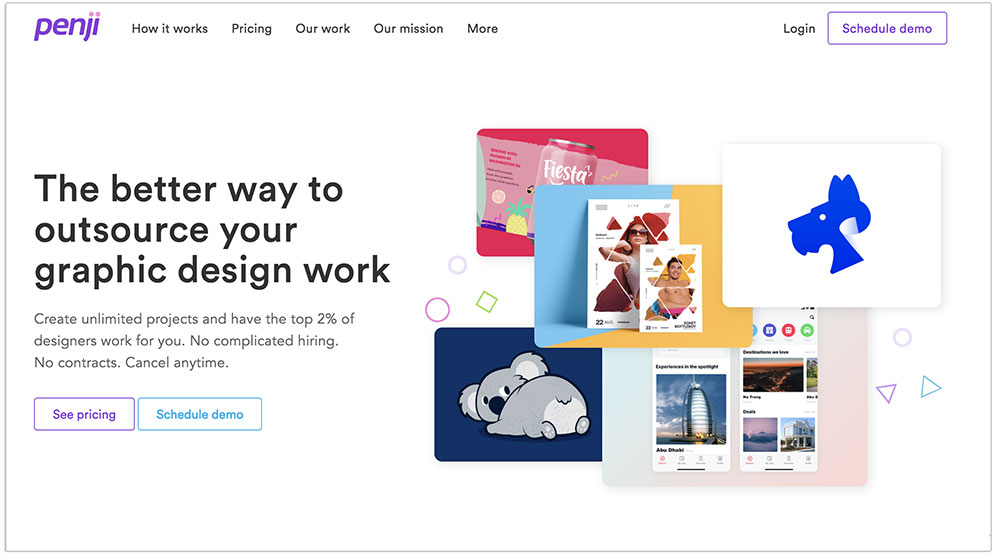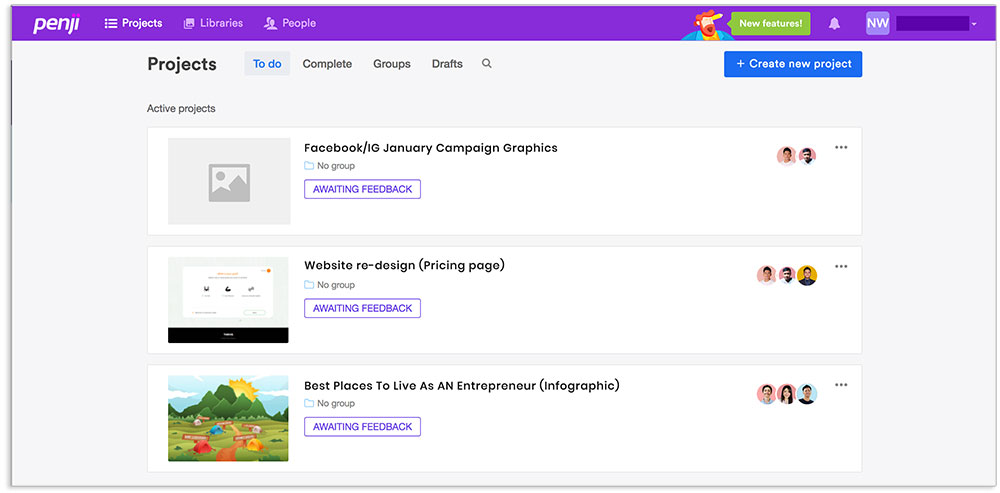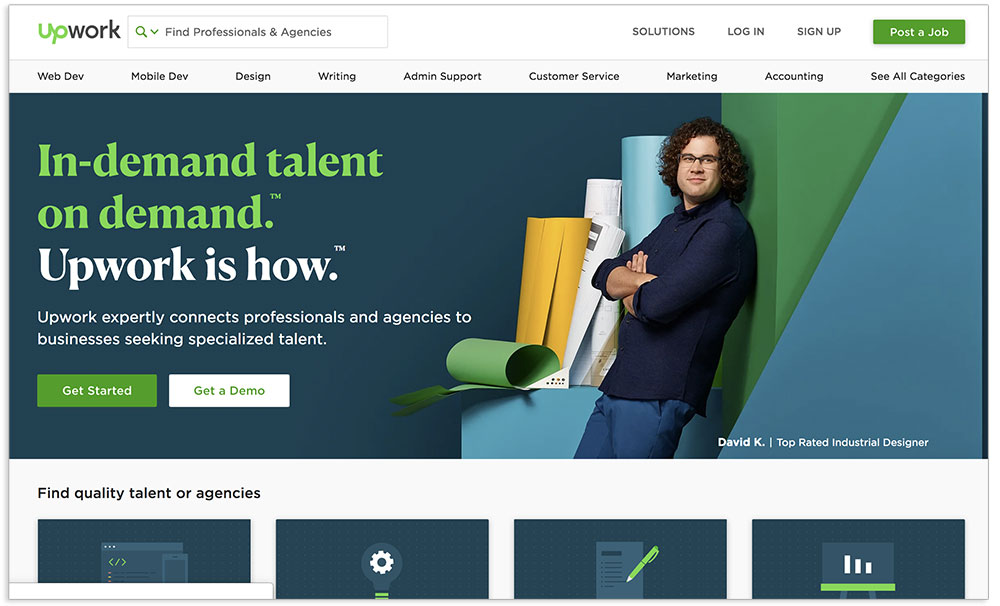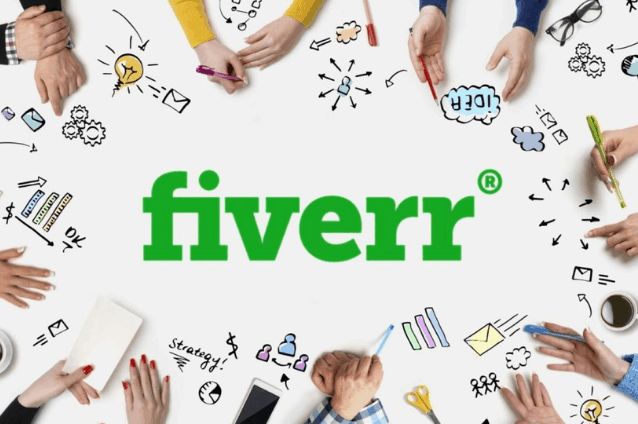Business
Working With An Agency? They’re Probably Outsourcing To These Startups
Published
6 years agoon

Have you ever wondered if the agency you hired is secretly outsourcing the work?
As a digital publication, we’ve hired countless agencies to help code, design, market, and launch products for us. We usually have a Project Manager from their head office as our point of contact. But we’re never sure who is completing the work. Where are they outsourcing them to?
As curious journalists, we decided to find out. For an entire month, we created a fake agency called Flower Pot Media LLC. Then we joined various Facebook groups, forums, private Google groups, and subreddits to chat with fellow agencies. We also interviewed a handful of employees and subcontractors who frequently work with creative firms to learn more about how agencies operate. It wasn’t easy to get people to cough up where they’re outsourcing to, but we eventually got a list of names. And to our surprise, the same few companies keep popping up.
Our goal isn’t to expose agencies or reveal how they make money. If you don’t have the organization or leadership required to manage a campaign, then you’re better off hiring an agency. But if you want to save some money AND are willing to put in the time/energy to coordinate, manage, and execute a campaign yourself, then this list is for you.
Content Fuel (Blogs/content)

As a writer myself, I know how tricky it is to hire GOOD writers. There are plenty of writers who will produce junk or just “spin” content for $5/hr or $10 – $25 per article for you. None are agency-quality or anything you’d want on your website.
After a bit of digging and asking around in the forums, many of our friends say they’ve either used or are currently using Content Fuel and have a great experience, mainly with the quality of their writers.
Content Fuel is a startup that provides unlimited content writing at a flat monthly rate. The main selling point is that their writers are damn good writers. From my experience, their level of writing qualifies for anywhere from $25 – $50/hr or $500 for a 1000 word article. For the price, I’m not entirely sure how they’re able to afford that kind of talent.
Another nice perk of Content Fuel is that you don’t need to manage the writers. If a writer doesn’t work out, you can instantly request for another writer to be assigned. This saves time, as Agencies often have to manage freelance writers, and that can be time consuming and exhausting.
Penji (Graphic design, Illustrations, Ads, Web/App designs)

We found Penji because their salespeople are constantly writing in all of the forums and private groups. But they weren’t there to sell. Instead, they just help answer everyone’s questions, which we thought was a very smart sales tactic.
Penji uses an on-demand and unlimited service model that agencies often take full advantage of. Similar to Content Fuel, you can submit as many design projects as you want for your clients. Their team of on-demand designers gets to work. And instead of getting billed per project ($300-$500/project adds up), Penji charges a flat monthly rate every month regardless of usage.
We used to hire a local design agency to handle all of our design tasks. We were billed for every project, every revision, and paid an hourly rate of $75/hr. Our monthly invoice was anywhere from $4000 – $6000.
Curious to see if the rumors were true, we signed up. In the first month, they produced 33 completed designs for our team ranging from banners, infographics, and social media posts. We paid $698 for what could’ve easily been an $8000 invoice from a local agency or freelancer. True to their promise, they didn’t charge us extras for revisions or any overage.

We especially like their dashboard. It’s easy for agencies to manage their client’s projects. You can create a brand profile for each client and upload all their logos and brand materials. And any time you need a design job done for that client, just select the brand profile and Penji’s designers will have everything they need to get to work. They were lightning fast. Everything we submitted, they turned around in less than 48 hours. Quality was either the same if not sometimes even better than the agency we hired. Overall, we can see why agencies outsource to Penji.
Upwork (Coding)

Upwork is a great place to outsource programming and coding work to. You’ll find developers from India, Pakistan, Ukraine, and many other countries from around the world. Rates are relatively cheap, from $5/hr for entry-level developers to $35+/hr for more advanced talents. You can also hire a group of developers/agencies directly from Upwork.
We hired a local agency to code our website (ownersmag.com), however, at times it felt like we were actually communicating with someone from India. It wasn’t a problem for us, because the communication and work were good. But we did wonder how much we would’ve actually paid if we were to go directly to the source.
One caveat you should note is that, unlike Content Fuel and Penji, you’re doing the hiring and managing on Upwork yourselves. Content Fuel and Penji does all the hiring, managing, and finding the talent for you, so it’s pretty hands-off. Meanwhile, on Upwork, you need to post a job, interview the candidates, pay them yourself, and also be up at night to collaborate with them. Keep that in mind, as that level of management alone can be worth hiring an agency for.
The Hoth (SEO)

As a publication, we don’t need to hire an SEO agency to help us rank. However, many of our sponsors and advertisers do. The Hoth is a one-stop-shop for white-labeling SEO services. They offer an internal platform for agencies to keep track of and manage the client’s SEO progress. They handle white-labeled reporting too, so you can send branded reports for an added touch.
Many agencies we spoke to use The Hoth as a reliable 3rd party service to help their clients’ SEO campaign succeed. They’ve been around for a while and although the SEO white-labeling space is fairly competitive, they stand out as one of the more reliable services.
Conclusion
Don’t go firing your agency and try to do things yourself just yet, that might not be a good idea. The real value of an agency is its ability to coordinate, communicate, manage, plan, and execute a successful campaign for you. And that often requires many hours, phone calls, and meetings, which is exactly what you’re paying for.
Agencies outsourcing the workload is completely normal. As a matter of fact, it would be unusual for an agency to do everything inhouse themselves. So before attempting to take over the work yourself, make sure you have the capacity and coordination to manage everything.
You may like

TL;DR: Penji leads Fiverr alternatives for businesses needing consistent design work at $499/month. Designjoy offers premium creative direction at $5,995/month. ManyPixels provides affordable, unlimited design at $549/month. Dribbble connects you with portfolio-vetted designers. Behance gives access to Adobe’s creative network.
Best Fiverr Alternatives:
- Penji: Unlimited designs for $499/month with US-based designers
- Designjoy: Premium subscription service at $5,995/month
- ManyPixels: Budget-friendly unlimited design at $549/month
- Dribbble: Direct access to portfolio-vetted designers
- Behance: Adobe’s creative network for finding talent
Why Are Business Owners Leaving Fiverr?
Some business owners find it difficult to search through numerous Fiverr profiles to find reliable designers. Frequently cited concerns include inconsistent quality, communication issues, and designers discontinuing work before completion.
Alternative freelance design platforms have emerged. Some platforms verify their designers, provide transparent pricing, and aim for reliable results. Here are services that support business needs.
Which Platforms Actually Work for Business Owners?
Penji: Best Value for Business Owners

For $499 per month, businesses can submit multiple design requests without worrying about extra charges or negotiating prices. This option provides consistent graphic design support as needed.
Penji connects you with US-based designers who know your industry. They handle everything from social media graphics and presentations to logos and print materials. Most projects are completed in 24 to 48 hours, and you can request as many changes as you need. You can also pause your subscription whenever you want, which is helpful for businesses with changing needs.
Designjoy: Best for Premium Creative Work
Businesses seeking premium creative direction may consider Designjoy at $5,995 per month. Designers often bring experience with major brands. The service includes design quality, easy revisions, and a focus on thoughtful creative work.
ManyPixels: Best Budget Subscription Option
ManyPixels charges $549 per month for unlimited design requests. Their team is global, so projects usually take 48 to 72 hours, compared to Penji’s faster turnaround. This is a good fit for marketing teams that need many designs, such as ads, email headers, or social media templates.
Dribbble: Best for Finding Portfolio-Vetted Talent
Dribbble began as a platform for designers to display their work. Clients can contact designers directly for freelance or contract opportunities. Rates typically range from $50 to $300 per hour and are set between client and designer. The platform allows portfolio reviews before contact and does not charge additional platform fees.
Behance: Best for Adobe Creative Professionals
Behance is Adobe’s creative network where thousands of designers share their portfolios. You can’t hire designers directly through the site, but it’s a great place to find talent and contact them by email or LinkedIn. Many designers include their availability and contact details on their profiles, so it’s simple to get in touch.
How Do You Choose What Fits Your Business?
Penji offers both quality and cost considerations: access to US-based designers, fast turnaround, and unlimited requests are standard. Learn more about why businesses prefer Penji over traditional freelance marketplaces.
Designjoy may be suitable for businesses in markets where design quality is important for branding. ManyPixels can be an option for those prioritizing budget and adaptability over turnaround speed. See how Penji compares to Fiverr in terms of quality and reliability.
Ready to Stop Settling for Unreliable Design?
Businesses may benefit from exploring Penji’s subscription service to determine if reliable, high-quality design solutions meet their requirements. Browse through examples of completed projects to see the quality you can expect.
Frequently Asked Questions
Which Fiverr alternative is best for small business owners?
Penji works best for most small businesses because $499/month is affordable and includes unlimited design work. You avoid the time drain of managing freelancers while getting consistent quality. Only go premium (Designjoy) if your market demands it.
Can I pause these subscriptions if I don’t need design every month?
Yes. Penji, ManyPixels, and Designjoy all let you pause at any time. You only pay for months when you’re actively using the service, making it practical even for businesses with seasonal needs or unpredictable design requirements.
What types of design work do these platforms handle?
Penji covers logos, social media graphics, presentations, print materials, web design mockups, and packaging. Designjoy handles similar work plus strategic brand development. ManyPixels focuses on digital marketing assets. Most platforms handle everything except complex web development or animation.
How do subscription services compare to hiring a full-time designer?
A full-time designer costs $50,000-80,000 annually plus benefits. Penji runs $5,988/year with more flexibility. You get similar output without payroll overhead, equipment costs, or downtime when there’s no work. Plus, you can pause between busy periods.
Are the designers actually based in the US?
Penji uses US-based designers who understand American business culture and time zones. ManyPixels works with a global team across different time zones. Designjoy features experienced US designers. If location matters for communication and cultural fit, check each platform’s designer location before committing.

TLDR: Penji and Kimp do flat rate unlimited design (Kimp throws video in, too). ManyPixels is cheaper for digital assets and Designity is premium US-based creative direction for more complex projects.
These Superside alternatives made the cut, and a few stand apart from the rest. While there are relative pros and cons to each worth delving into, the features that matter most to your team and company goals will define what’s best for you. Here’s a shortlist of what stands out.
1 Penji

Penji is one of the best superside alternatives. It claims to be the simple graphic design subscription solution you need. With flat-rate pricing, it’s successful through its workforce acquisition efforts as they only hire the top 2% of designers worldwide, meaning there’s always a crew ready to take and execute reliable assignments from social graphics to print needs. Furthermore, they have a clean feedback process and queue meaning that marketing teams can rely on a sound platform solution that delivers over time for ongoing launches or efforts for foundational power.
Pros:
- Unlimited requests and revisions.
- Designers are dedicated, meaning they get to know the brand over time.
- Can do everything from web needs to print, advertising, and decks.
- Flat pricing makes budgeting easy for internal chargebacks.
Cons:
- The fastest turnaround time requires an upgrade.
2 ManyPixels

ManyPixels is one of the top up-and-coming Solutions thanks to ease of use and lower starting pricing. ManyPixels is a good choice for those companies that primarily need digital graphic assets and want something that’s easy to scale. It also includes motion and video editing, which makes it more versatile in its outputs as the plans increase.
Pros:
- Low starting prices are one of the lowest for entry-level efforts.
- Access to all digital and print graphic design.
- A dedicated design portal helps keep things clean.
- Can easily pause or cancel a subscription.
Cons:
- Higher plans include UI/UX and more extensive offerings.
- Important requests may take longer based on the request type.
- May be less strategic than an agency would be.
3 Kimp

For anyone with visually-driven campaigns on social media and web properties, Kimp believes it specializes in unlimited graphic design plus unlimited video design, thus allowing for easy access to motion graphics needs at a flat-rate subscription price. This is especially effective for companies looking to have the Graphics + Video combo.
Pros:
- The Graphics + Video combo plan is a unique offering.
- Team of dedicated graphic designers and video editors.
- Combines branding efforts through Canva and motion graphics needs.
- 7-day risk-free trial.
Cons:
- It’s not recommended for niche-specific designs (like UI/UX or web development).
- There are hard limits per project and queue requests.
- The price for video or combo plans are higher.
4 Designity

Finally, Designity operates as a managed service where a Creative Director is assigned to the customer who manages a team of domestic creatives who are specialists in their field (for designs, animations, etc.). This allows for more quality assurance from a domestic stance in a strategic alignment offering more creative accountability than online-only, ticketed request platforms like others.
Pros:
- Dedicated U.S.-based Creative Director runs requests.
- U.S.-based creative services mean sensitive brand work is safe.
- Great for complicated projects that need time and oversight.
- The full-service platform includes design, video, and animation.
Cons:
- Higher costs due to managed U.S.-based efforts.
- Takes longer than it’s worth for basic accountability measures.
- Only mid-market to enterprise offerings will make sense here due to costs.
Business
What are the Best Canva Alternatives for Designers and Marketers?
Published
5 days agoon
October 23, 2025
Many marketers love Canva as it allows them to create stunning graphics easily and affordably. In addition, it is also a favorite tool among many professional designers. However, Canva is one tool that many marketers and designers outgrow, thanks to its limitations. If you’re looking for the best Canva alternatives, here is our list of the top five:
Penji

A graphic design subscription platform, Penji, is the best Canva alternative for all business sizes. It offers unlimited graphic design services and revisions done by top-caliber designers. In as little as 24 to 48 hours, you’ll get your designs, reducing the risks of design bottlenecks and delays. All these for a flat rate, starting at $499 per month.
RelayThat

Looking for the best Canva alternative that offers design automation? RelayThat is the design partner you need. It can generate numerous branded visuals instantly, allowing you to get bulk designs quickly. Its key features include brand management, headline generator, one-click resize, and over 3 million free images.
VistaCreate

Previously known as Crello, VistaCreate is an excellent option for social media graphics, posters, and other marketing materials. It has an interface similar to Canva, making it an easy-to-use alternative. It also offers animated templates, a drag-and-drop editor, and print services through VistaPrint.
Stencil

Claiming to be “The Web’s Favorite Online Graphic Design Tool,” Stencil is an easy-to-use alternative to Canva. It offers a low learning curve, making it ideal for small teams, startups, bloggers, and social media managers. This tool lets you whip up blog headers, ad creatives, and other visual assets quickly.
Design Wizard

A powerful image and video editing tool, Design Wizard enables you to create both static and animated content. It offers a comprehensive template library that you can edit for all your design needs. It has a low learning curve, thanks to its beginner-friendly interface.

What’s the Best Fiverr Alternatives?

What’s the Best Superside Alternatives today?

What are the Best Canva Alternatives for Designers and Marketers?
What’s the Best Design Pickle Alternative?

Top Marketing Podcasts for 2025 You Should Be Following Today

What are the Best Social Media Post Design Services for Startups?

What’s the Best Package Design Service Agency?

Top Marketing Podcasts for 2025 You Should Be Following Today
What’s the Best Design Pickle Alternative?

What are the Best Social Media Post Design Services for Startups?

What are the Best Canva Alternatives for Designers and Marketers?

What’s the Best Superside Alternatives today?



